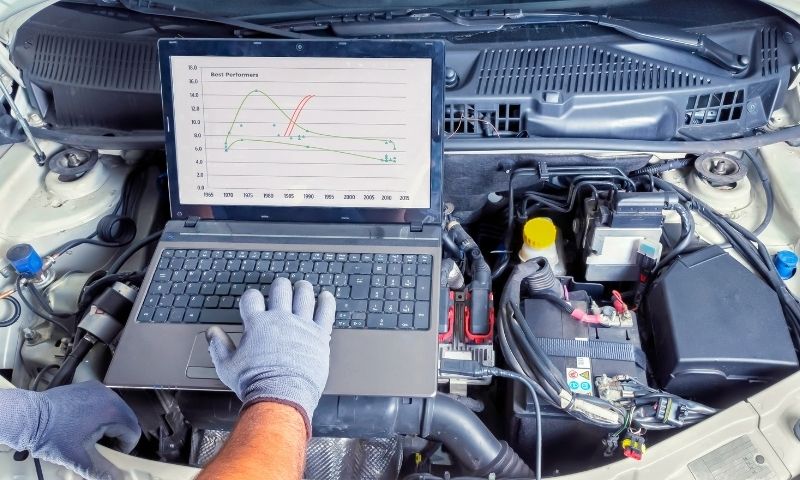A Leading Resource Built By Automotive Lovers, For Automotive Lovers.
We’ve helped consumers around the world make their purchasing decisions.
Latest Articles
An AC-coupled battery storage system converts DC power from solar panels into AC electricity using a solar inverter. This setup is compatible with existing homes. It allows for backup power… A vented battery has a pressure release valve that lets out gases during normal operation. This safety feature stops pressure build-up and bursting. Common types are lead-acid and AGM batteries…. The nominal voltage of a AAA battery is usually 1.5 volts for alkaline and lithium types. Rechargeable NiMH batteries have a lower nominal voltage of about 1.2 volts. Voltage may… A UPS battery system, or uninterruptible power supply, gives backup power during outages. It stores rechargeable energy and keeps electronic devices running smoothly. UPS systems protect items like computers and… A structural battery pack is a battery that is part of a vehicle’s structure. It stores energy and supports mechanical loads. This design reduces weight and boosts vehicle efficiency. It… A sump pump battery backup is a system that keeps a sump pump running during power outages. It consists of a battery, charger, and pump system. This system ensures operation… A storage battery converts chemical energy into electrical energy. It stores energy for future use. Key applications include powering vehicles and helping the electrical grid during peak power demand. It… A battery separator is a polymeric membrane located between the anode and cathode. Its main function is to prevent electrical short circuits by keeping the electrodes apart. This design allows… A shunt battery monitor measures the current or energy flow to and from a battery. It installs on the battery’s negative terminal. This device provides important data on state of… A regular flooded battery, or wet cell battery, is a traditional lead-acid battery. It has lead plates submerged in a liquid electrolyte. Users must monitor the electrolyte level. This battery… A portable battery pack, also known as a power bank, is a lightweight device that charges electronic devices like smartphones and tablets on the go. It comes in various sizes… A regular battery, also called a starting or automotive battery, provides quick bursts of power to start vehicle engines. It is designed for short use, unlike a deep cycle battery… A parasitic load on a battery is a constant power draw that happens when the vehicle is off. This battery drain comes from electrical components, such as aftermarket accessories. Normal… A modular battery is an energy storage system built from connected battery modules. Each module uses lithium-ion cells designed for performance and safety. This setup allows easy scalability. Users can… A non-standard battery is a battery that varies in size or specifications from typical types like alkaline or lithium batteries. These batteries often fit specific devices and may be custom… Low maintenance batteries are conventional lead-acid batteries with minimal upkeep. They feature sealed designs, which prevent water loss and reduce electrolyte maintenance. These batteries often include pressure release valves for… A maintenance-free deep cycle battery is a sealed battery that doesn’t need water. It uses thick lead plates for deep discharges, making it reliable for consistent use. These batteries have… A lithium-ion battery pack is a type of rechargeable battery system. It includes multiple lithium-ion cells, an anode, a cathode, an electrolyte, a battery management system, and a protective circuit… A low battery capacity on an iPhone occurs when the battery can hold less than 80% of its original charge. This leads to reduced usage hours and may display a… A lead acid battery, known as Valve Regulated Lead Acid (VRLA) or Sealed Lead Acid (SLA), is a rechargeable battery type created by Gaston Planté in 1859. The two main… A hybrid battery pack combines battery cells and supercapacitors. It improves energy and power balance and optimizes performance in hot and cold conditions. This pack supports hybrid electric vehicles by… A house battery in an RV, usually a deep-cycle battery, supplies power to appliances when not connected to shore power. It commonly operates at 12 volts DC. Typical types include… A house battery on a boat is a deep cycle battery. It powers onboard systems like GPS, electronics, and bilge pumps. This 12-volt DC system is different from engine starting… High voltage batteries are rechargeable systems that operate above 100 volts, usually between 300 and 800 volts. They are used in electric vehicles and energy storage applications. These batteries offer… A healthy battery voltage for a car is 12.6 volts or higher when the engine is off. When the engine is running, the voltage should be between 13.5 and 14.5… High-capacity batteries are energy storage devices that store more charge than standard batteries. With a 4Ah rating or higher, they provide high energy density and long cycle life. These batteries… A good phone battery capacity is usually between 4000mAh and 5000mAh. This range supports battery life of about 12 to 24 hours, depending on the phone’s energy efficiency. For heavy… A good iPhone battery capacity is 80% or higher, as recommended by Apple. After 500 charge cycles, an iPhone battery should retain about 80% of its capacity. To ensure longevity,… A good battery capacity for a smartphone is usually between 4000mAh and 5000mAh. This range supports daily activities with ample screen-on time. Lithium-ion batteries last longer when kept between 20%… The Anker PowerCore 10,000 mAh is a great power bank. It has a high capacity and fast charging speed for phones and tablets. The INIU Portable Charger is another strong…AC Coupled Battery Storage: How It Works, Pros, Cons, and Practical Insights
Vented Battery: What It Is, Its Importance, and Vehicle Applications
AAA Battery Voltage: Types, Maximum Levels, and How to Check It Explained
UPS Battery Systems: Definition, Importance, and How They Work
What is a Structural Battery Pack? Its Role in Future EV Development Explained
Sump Pump Battery Backup: What It Is, How It Works, and Why You Need One
Storage Battery: What It Is, Its Applications, and Importance in Energy Storage
What Is a Separator in a Battery? Its Function, Safety Role, and Impact Explained
Shunt Battery Monitor: What It Is, How It Works, and Its Importance for Off-Grid Systems
Regular Flooded Battery: Key Features, Comparisons, and Types Explained
Portable Battery Pack: What It Is, How to Use It, and Best Options for You
What is a Regular Battery? Types, Lifespan, and Key Differences Explained
What Is a Parasitic Load on a Battery? Causes, Effects, and Prevention Methods
Modular Battery: Benefits, Key Considerations, and Versatile Configurations
What Is a Non-Standard Battery? Types, Lifespan, Disposal & Key Differences
What is a Low Maintenance Battery? Benefits, Myths, and Key Comparisons
Maintenance Free Deep Cycle Battery: Complete Guide to Benefits and Myths
Li-ion Battery Pack: Key Components, How It Works, and Applications Explained
Low Battery Capacity iPhone: Signs, Effects, and Tips for Better Battery Health
Lead Acid Battery: What It’s Called, Types, Functions, and How to Charge
Hybrid Battery Packs: What They Are, Components, Lifespan, and Key Benefits
House Battery in an RV: Essential Guide to Choosing, Maintaining, and Replacing Yours
House Battery on a Boat: Types, Sizing Decisions, and Expert Insights
High Voltage Battery: Understanding Its Safety, Applications, and Benefits
Healthy Battery Voltage: Signs of a Fully Charged Car Battery and Optimal Levels
High Capacity Battery: Definition, Types, Performance, and mAh Explained
What is a Good Phone Battery Capacity? A Guide to Best Battery Life Options
Good iPhone Battery Capacity: Tips for Health, Longevity, and Performance
What Is a Good Battery Capacity for a Phone? Factors for Long-Lasting Performance
What is a Good Battery Pack? Top Features and Expert Recommendations for Portable Chargers



